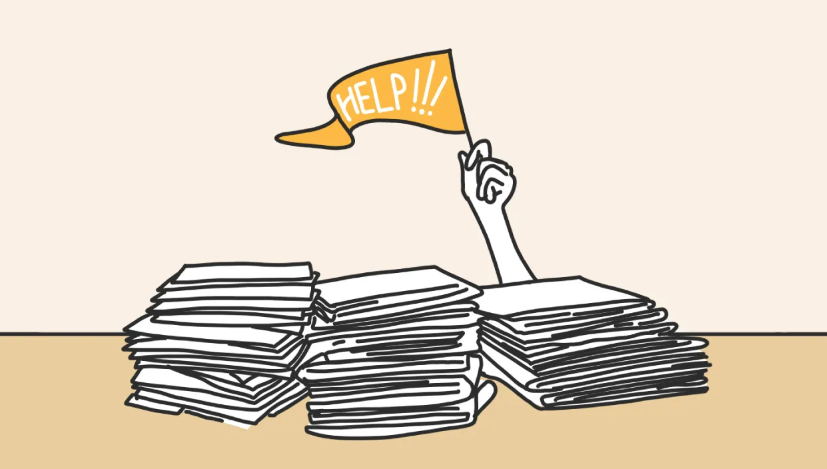Do you have a suspicion that you or someone you know might suffer from burnout syndrome? In this blog, we answer the questions: What is burnout, and how do you prevent it?
It is called a “Manager’s Disease”, but you don’t have to be in a managerial position to experience chronic stress or exhaustion at the workplace. Burnout can affect nearly anyone who operates in a professional setting including business leaders, nurses, teachers, athletes, freelancers and students.
We seek to answer the question: ‘What is burnout?’ and identify some of the symptoms, causes, and treatments of workplace burnout so that you can identify it (and prevent it) in yourself, your colleagues and your loved ones.
How do you recognise the symptoms of burnout?
We can thank psychologist Herbert Freudenberger for his contributions to our understanding of the term burnout, which is generally considered to be a state of physical and mental exhaustion caused by one’s professional life.
Highly motivated employees placed in competitive environments are more likely to experience symptoms of burnout. That motivation can sometimes get the best of them as they endlessly try to make an impact, only to find themselves failing to achieve the results they crave.
The common symptoms of burnout can be divided into three categories:
Fatigue. Both emotional and physical fatigue can play a role in those who suffer from burnout. Things like feeling constantly tired, having trouble sleeping, loss of appetite and depression are common signs in this category.
At the workplace, keep an eye open for colleagues who call in sick often, have high levels of absenteeism or who complain about their physical health and wellbeing.
Detachment and depersonalization. People who go through burnout have a loss of enjoyment in things they used to find fun or exciting. They become pessimistic and prefer isolating themselves rather than interacting with colleagues, friends or loved ones.
At the workplace, be on the lookout for employees who are bitter, cynical and who avoid joining new projects or challenging themselves.
Feeling of failure. Due to an internal fear of failure, individuals who suffer from burnout often accomplish less and have poor performance. They may be apathetic to their career plan and prevent themselves from accomplishing anything meaningful because they don’t see the point.
What is burnout?
If you read the above list of symptoms and thought “that sounds like me!”, then you’re not alone. Many of us have felt those feelings during stressful times of our lives. But don’t worry – it doesn’t necessarily mean that you have workplace burnout but it is important to be aware of the symptoms and learn to manage them at an early stage.
The more advanced cases of burnout feature the above symptoms plus a steady decline in mental health. The combination leads to unhealthy behaviour, poor on-the-job performance and a negative impact on your personal life.
The pioneering psychologists’ Herbert Freudenberger and Gail North put forward a detailed 12-stage model that most accurately depicts a person’s decline to feeling overwhelmed, hopeless and burned out while on the job.
So, what is burnout? It’s defined as twelve burnout phases:
An obsessive compulsion to prove yourself. This is especially true for those highly-motivated employees who feel they must prove their worth obsessively. You don’t delegate or ask for help, but try to solve everything yourself.
Extreme work ethic. This happens when you develop an inability to “switch off” your mind about work-related duties and therefore take on more responsibility than can be handled. In a world where remote work is becoming the new normal, it is becoming more difficult to switch out of that working mindset. It happens to the point of interference with your work-life balance.
Neglect of your own needs. Ignoring basic personal needs like eating, sleeping and socialising. You even rationalise your unhealthy lifestyle as “normal” or “necessary.”
Displacement of conflicts. You find excuses for your mistakes (which pile up because of your long to-do list). However, you don’t take responsibility and instead dismiss any errors and feel threatened by accusations.
Value re-adjustment. You slowly replace your value system and re-prioritise your life so that work comes first, and family, friends and hobbies are secondary.
Increased denial. You play the blame game – rather than acknowledging your lifestyle inadequacies, you blame other people or external factors like time and pressure.
Hopelessness and withdrawal. Eventually, you begin to act like a hermit. You close your door to your office at all times, dread the moments you have to interact with colleagues and feel stressed about spending time in social settings since it prevents you from being at work. At this stage, alcohol or drugs are sometimes used to relieve stress.
Negative behaviour changes. You behave erratically, are temperamental and are oblivious to the way your behaviour changes.
Depersonalisation and alienation. You lose contact with yourself and others. It becomes impossible to perceive your needs or the needs of others because your judgment is so clouded.
Inner emptiness. You feel hollow and empty. To overcome the feelings, you seek out external satisfaction like overeating, alcohol use or other cheap thrills.
Depression. Your depression can be characterised by a feeling of complete futility, exhaustion and indifference to the way things turn out.
Complete collapse and suicide risk. In the final stage of burnout, all your worst feelings of inadequacy and exhaustion combine and can lead to what’s known as complete mental or physical collapse. In the worst cases, it can lead to suicidal thoughts. Serious medical attention is required.
How is burnout diagnosed?
As you can see the answer to the question; what is burnout? Is quite complex. But an advanced case of burnout is a serious cause for alarm. From a medical perspective, it’s often difficult for physicians to diagnose burnout early since the symptoms are frequently associated with other factors.
An affected person may simply complain of exhaustion or stomach pains when, in reality, the issues are not necessarily due to physical conditions but merely to being overworked or undervalued at the workplace.
The best way to prevent yourself from being burned out is to be aware of your own emotions, capabilities and general stress levels. While this is easier said than done, it’s still important to find ways to check-in with your own emotional and psychological state. Find good ways to disconnect from work and work-guilt when you’re outside of work. Identify what makes you stressed, and what helps you relax. Maybe talk to a life coach about how to set your personal goals and manage your time.
If, based on the list above you feel that you are on the path to burnout you should also consider to seek out professional help, like visiting a counsellor or therapist. A friend or mentor can likely spot a downward spiral toward burnout long before you can spot it within yourself. So, it’s important to trust the judgment of your closest friends and to discuss your feelings openly if possible.
What is burnout treatment, awareness and personal growth
There is no standardised treatment for burnout because one person may react differently (and exhibit different symptoms) to burnout than the next person.
Treatment, then, is a highly personal process and best left to a close relationship with a confidant or medical professional. It usually involves a healthy balance of rest, stress reduction and relaxation!
Always remember that your professional growth shouldn’t have to come with drastic costs to your personal growth or emotional wellbeing. By understanding the answer to the question; what is burnout? And the effect it can have on you, you’re one step closer to removing the risk of it ever developing in your life!







